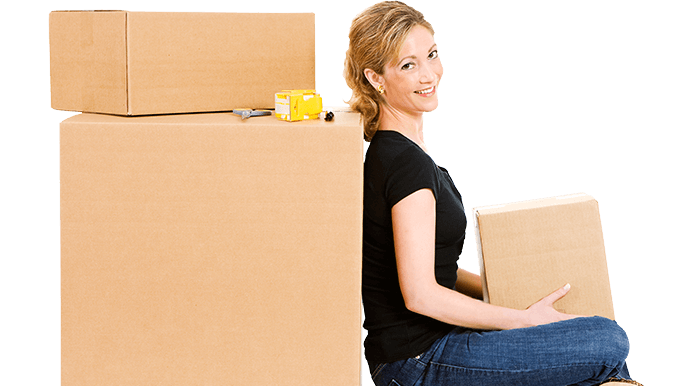Piano Moving 101: Why Expert Assistance is Essential
Posted on 12/06/2025
Piano Moving 101: Why Expert Assistance is Essential
Pianos are more than just musical instruments; they are often invaluable heirlooms and cherished centerpiece in many homes. Whether it's a grand, upright, or baby grand piano, moving such a large, delicate, and heavy item is no small feat. In this comprehensive guide to piano moving, we will discuss the complexities of piano transportation, the risks involved with DIY moves, and why professional piano moving services are the safest, smartest choice.

Understanding the Unique Challenges of Piano Moving
To appreciate why expert piano movers are vital, you first need to understand what makes moving a piano so unique--and so risky. Pianos, while elegant, are extremely intricate and remarkably heavy. An average upright piano weighs between 300 to 500 pounds, while grand pianos often exceed 1200 pounds or more.
- Complex internal mechanisms: Each piano contains thousands of moving parts, including strings, hammers, keys, and pedals. Minor impacts can cause significant damage or expensive repairs.
- Irregular shapes: Unlike most large furniture, pianos have awkward shapes and delicate legs, making standard equipment and techniques impractical.
- Significant weight concentration: Weight is unevenly distributed. For instance, the cast iron harp inside grand pianos is extremely heavy and offset to one side.
- Surface sensitivity: The external finish--often gloss lacquer or wood veneer--scratches easily and any dings are highly visible.
Due to these characteristics, careful planning, technique, and equipment are essential for a successful piano move.
The Real Risks of DIY Piano Moving
It might be tempting to save some money by recruiting friends or using general movers, but moving a piano without professional know-how can be disastrous. Here are some key risks:
- Personal injury: Pianos are unwieldy, top-heavy, and can easily tip over. The risk of serious back injuries, crushed fingers, or even worse accidents is very real.
- Piano damage: Dropping or bumping your instrument, even slightly, can break strings, soundboards, pedals, or the cabinet. Internal misalignments can go unnoticed, quietly ruining the instrument's tone or action.
- Property damage: Moving a piano up or down stairs, through tight doorways, or along wooden floors can result in gouged walls, damaged floors, and cracked plaster.
- Insurance liabilities: Unless you use insured and bonded piano movers, you are responsible for any mishaps, which might not be covered by home insurance.
Every year, amateur moves result in thousands of dollars in damage--not to mention untold sentimental losses for irreplaceable instruments.
Benefits of Professional Piano Moving Services
Professional piano moving companies offer more than muscle. They bring expertise, specialized equipment, and comprehensive insurance to the table, ensuring your prized possession reaches its destination unscathed.
Specialized Equipment and Techniques
- Piano dollies and skids: Designed specifically to support the weight and shape of various piano models while keeping the instrument stable during movement.
- Stair-climbing machinery: Some moves require mechanized lifts or platforms, especially in apartment buildings with tight stairwells.
- Protective padding and blankets: To prevent scratches, dents, and with special covers to guard delicate finishes from humidity or dust.
- Secure strapping: High-tension straps secure your piano during transport, preventing shifting that could cause damage.
Trained and Experienced Movers
Certified piano moving experts possess extensive knowledge of the instrument's construction, stability points, and vulnerabilities. Their training includes lifting techniques, maneuvering narrow corridors, and even partial disassembly and reassembly when necessary.
Key benefits include:
- Accident prevention: With years of experience, professional piano movers know how to anticipate and overcome obstacles, minimizing risk to people and property.
- Damage avoidance: Specialists recognize and address the quirks of each piano type, ensuring sensitive components are protected throughout the process.
- Proper insurance coverage: Reputable companies carry liability and cargo insurance, offering peace of mind if something does go wrong.
Comprehensive Planning and Logistics
Every piano relocation is different. Factors like tight staircases, elevators, outdoor terrain, or historic homes require individualized solutions. Reputable piano moving services will conduct a detailed assessment before the move, ensuring they bring the right tools and manpower to safely transport your instrument.
The Typical Process of Professional Piano Moving
Step 1: Pre-Move Assessment
Movers will often visit ahead of time or request detailed images. They'll assess:
- Type, size, and current condition of your piano
- Entry and exit point measurements
- Stairways, doorways, and obstacles
- Parking and truck access
Step 2: Preparation and Protection
Piano movers will carefully secure the lid, wrap the instrument in padded blankets, and remove delicate or protruding parts, like pedals or music stands, when necessary.
Step 3: Lifting and Navigation
Using specialized dollies and skids, movers expertly lift and maneuver your piano, avoiding tilting or abrupt movements that could upset the balance or cause internal damage. Staircases are handled with extra care and equipment.
Step 4: Loading and Securement
Inside the moving truck, pianos are positioned to avoid vibrations or shifting, strapped securely, and surrounded by protective padding. Climate control may be provided for long-distance or sensitive moves.
Step 5: Delivery and Setup
At your new location, movers will carefully unload, position, and if needed, re-assemble your piano. Many professionals also recommend scheduling a tuning session after a move, as even the gentlest transport can affect the instrument's pitch.
Different Types of Pianos: Moving Considerations
Upright Pianos
Compact but heavy, uprights require careful maneuvering through doorways and corners. Proper strapping and dolly use are essential.
Grand and Baby Grand Pianos
These models are considerably more complex to move due to their size, weight distribution, and fragile legs. Expert movers will typically partially disassemble the lyre, legs, and pedals to create a manageable, safe package for transport.
Digital Pianos
Though lighter, digital pianos can be susceptible to moisture, dust, and jostling. Proper packaging and climate control remain important.
How to Choose the Right Piano Moving Company
Not all movers are qualified for piano transportation. When selecting a trusted piano moving service, consider the following:
- Specialization: Do they focus specifically on pianos and large instruments?
- Experience: How many years have they been moving pianos? Can they provide references?
- Equipment: Do they use custom skids, piano boards, dollies, and padding?
- Insurance and licensing: Are they fully insured and bonded?
- Reputation: Check reviews, testimonials, or endorsements from local music schools or dealers.
- Transparent pricing: Ensure estimates are clear about coverage, labor, mileage, and potential extra charges.
Questions to Ask Your Piano Movers
- What is your process for moving my specific type of piano?
- How do you handle stairs, tight spaces, or elevators?
- What insurance coverage do you provide?
- Do you offer climate-controlled transportation?

Frequently Asked Questions about Piano Moving
Is it ever safe to move a piano with general movers?
General movers lack the specialized training and tools needed for safe piano transport. While they may be able to move smaller digital pianos, traditional uprights and grands require expert assistance to prevent costly damage or injury.
How much does professional piano moving cost?
Piano moving costs vary depending on piano type, distance, stairs, and complexity. Prices typically range from $200 for local upright moves to over $1,000 for long-distance grand piano transportation. Remember, the value of safeguarding your instrument far outweighs the cost of repairs or replacement.
Do I need to tune my piano after moving?
Yes. Moving, even carefully, causes subtle changes in a piano's internal structure and positioning. Allow your piano to acclimate to its new environment (usually a few weeks), then schedule a professional tuning.
What is the safest way to move a piano upstairs?
Only professional movers with the right equipment (hoists, ramps, manpower, and technique) should attempt piano moves involving stairs. Attempting this without expertise is extremely dangerous.
Conclusion: Leave Piano Moving to the Experts
While moving a piano might seem straightforward, the instrument's unique vulnerabilities and substantial weight make it one of the most demanding household items to relocate. Damage to your piano or property and the potential for serious physical injuries are ever-present risks without professional piano moving services.
Don't leave your beloved instrument to chance. Protect your investment--and your well-being--by trusting an experienced, insured, and specialized piano moving company. With their advanced equipment, skilled team, and attention to detail, they ensure your piano remains a source of joy for generations to come.
If you're planning a move, don't hesitate: contact your local piano moving experts for a safe, stress-free experience.






